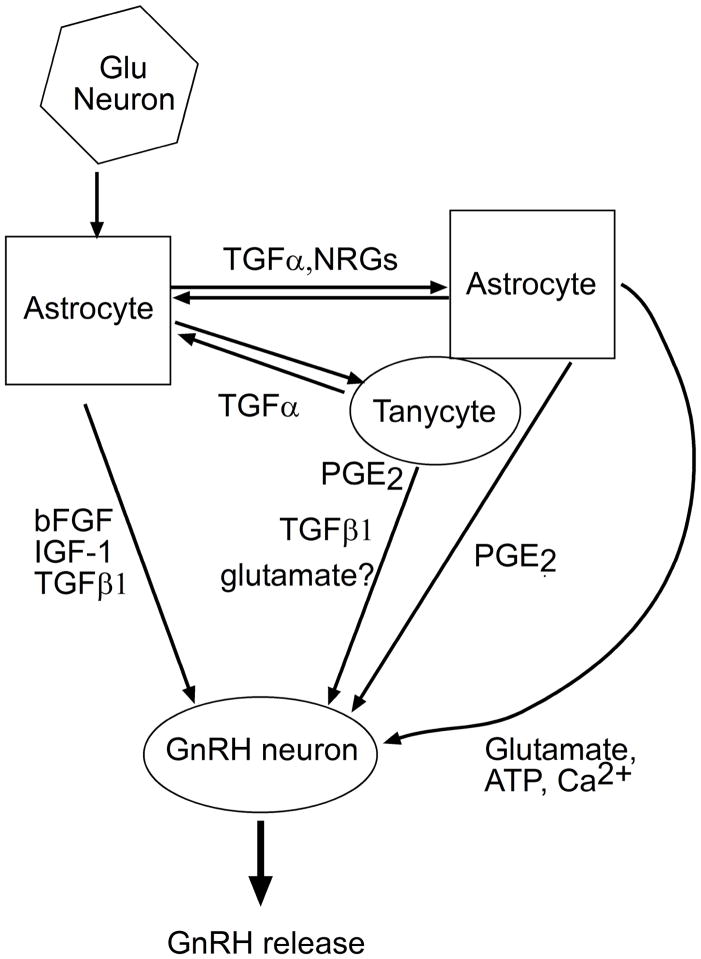Figure 1.
Control of GnRH secretion by growth factors and small molecules produced by glial cells. Some growth factors (bFGF, IGF-1, TGFβ1) act directly on GnRH neurons to stimulate production of GnRH. In contrast, growth factors of the epidermal growth factor family (TGFα and NRGs) act indirectly by stimulating the glial release of bioactive substances which, like PGE2, act on GnRH neurons to stimulate GnRH release. A neuron-to-astrocyte communication pathway is provided by glutamatergic neurons, which facilitate TGFα/NRG-dependent signaling in astrocytes. Tanycytes produce and respond to TGFα by synthesizing PGE2, which elicits TGFβ1 release.

